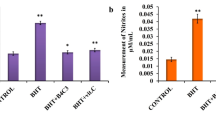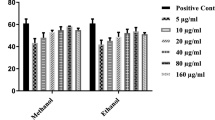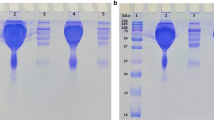Abstract
Oxidative stress appears to be implicated in the pathogenesis of various diseases including alcoholic liver injury. In this study we investigated the mechanism of apoptosis induced by tert-butyl hydroperoxide (TBHP) in HepG2 human hepatoblastoma cells. Treatment with TBHP significantly reduced glutathione content and glutathione reductase activity, and increased glutathione peroxidase activity, indicating that TBHP induced oxidative stress in the HepG2 cells. TBHP also induced reduction of cell viability and DNA fragmentation, a hallmark of apoptosis, in a dose-dependent manner. In addition, TBHP induced a sustained increase in intracellular Ca2+ concentration, which was completely prevented by the extracellular Ca2+ chelation with EGTA. TBHP also induced Mn2+ influx. These results indicate that the intracellular Ca2+ increase by TBHP is exclusively due to Ca2+ influx from the extracellular site. Treatment with either an extracellular (EGTA) or an intracellular Ca2+ chelator (BAPTA/AM) significantly suppressed the TBHP-induced apoptosis. Taken together, these results suggest that TBHP induced the apoptotic cell death in the HepG2 cells and that Ca2+ influx may play an important role in the apoptosis induced by TBHP.
Similar content being viewed by others
Article PDF
Author information
Authors and Affiliations
Rights and permissions
This is an Open Access article distributed under the terms of the Creative Commons Attribution Non-Commercial License (http://creativecommons.org/licenses/by-nc/3.0/) which permits unrestricted non-commercial use, distribution, and reproduction in any medium, provided the original work is properly cited.
About this article
Cite this article
Kim, JA., Kang, Y., Kim, Y. et al. Role of Ca2+ influx in the tert-butyl hydroperoxide-induced apoptosis of HepG2 human hepatoblastoma cellse. Exp Mol Med 30, 137–144 (1998). https://doi.org/10.1038/emm.1998.20
Published:
Issue date:
DOI: https://doi.org/10.1038/emm.1998.20
Keywords
This article is cited by
-
Pyruvate antioxidant roles in human fibroblasts and embryonic stem cells
Molecular and Cellular Biochemistry (2017)
-
Protective effect of carvacrol from Thymus quinquecostatus Celak against tert-butyl hydroperoxide-induced oxidative damage in Chang cells
Food Science and Biotechnology (2015)
-
Altered HepG2 cell models using etomoxir versus tert-butylhydroperoxide
Cell Biology and Toxicology (2011)
-
Vital imaging of H9c2 myoblasts exposed to tert-butylhydroperoxide – characterization of morphological features of cell death
BMC Cell Biology (2007)
-
Inhibitory effects of constituents ofGastrodia elata Bl. on glutamate-induced apoptosis in IMR-32 human neuroblastoma cells
Archives of Pharmacal Research (1999)



